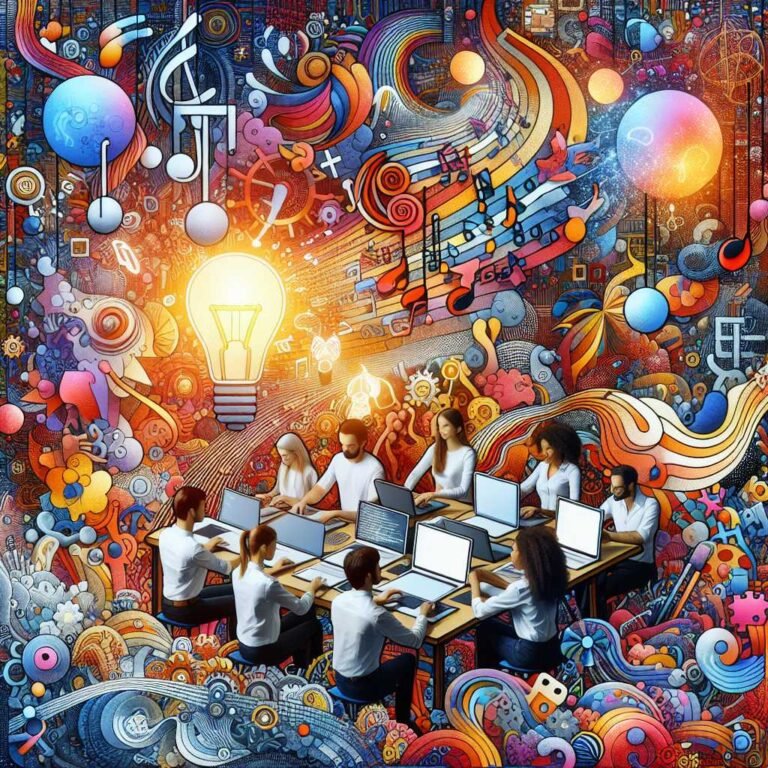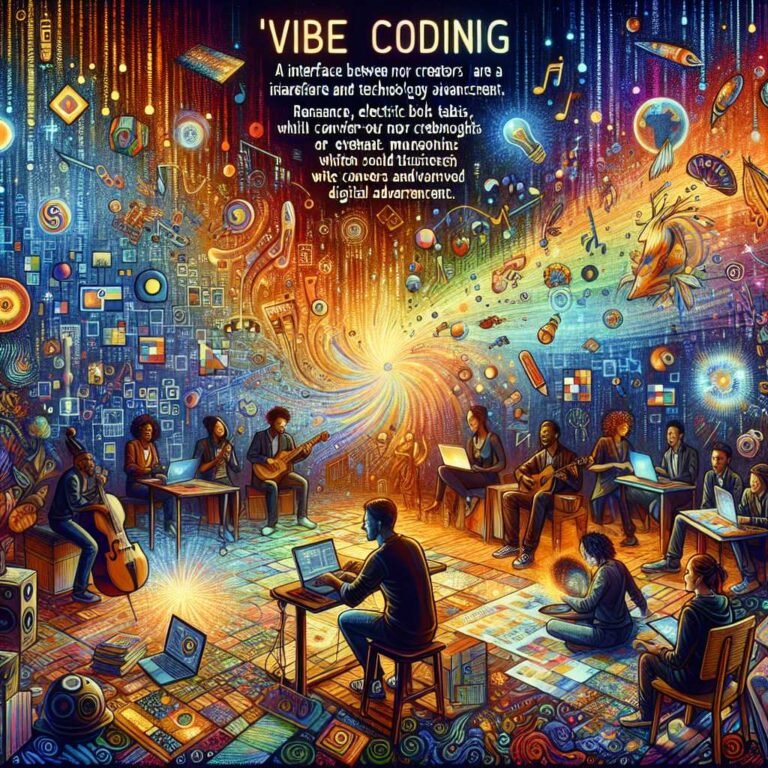The Nature of Code in JavaScript: A Friendly Guide to Simulating Natural Systems with p5.js
What if you could choreograph a flock of birds, grow a tree from a single line, or teach a digital creature to “learn”? Not with expensive software—just with JavaScript in your browser. That’s the magic of The Nature of Code, Daniel Shiffman’s beloved creative coding approach that turns complex natural phenomena into playful, visual experiments you can build step by step.
If you’ve ever watched The Coding Train on YouTube and thought, “I want to make that,” this guide is your on-ramp. We’ll unpack what The Nature of Code actually teaches, why p5.js makes it beginner‑friendly, and how to get started with projects like flocking birds, genetic algorithms, and neural networks—even if you’re new to math-heavy topics. By the end, you’ll see code as both a tool and a canvas.
The Nature of Code meets you where you are—whether you’re a designer exploring generative art, a student learning vectors for the first time, or a dev who wants a break from CRUD apps to build something alive. Shiffman’s secret is to soften intimidating ideas with visuals, metaphors, and small wins. Want to try it yourself with the full walkthroughs and sketches? Check it on Amazon.
What Is “The Nature of Code” and Why It Clicks for Beginners
Daniel Shiffman’s The Nature of Code is a hands-on guide that maps real-world systems—forces, crowds, growth, learning—into code. The focus isn’t on algorithms for their own sake; it’s on curiosity and emergent behavior. You learn the building blocks (vectors, randomness, noise) and then stack them to simulate gravity, flocking, evolution, and more. The book’s JavaScript edition uses p5.js, a creative coding library that simplifies drawing and animation in the browser. Many chapters are also available openly on natureofcode.com, and the companion demos on The Coding Train make it feel like a friendly workshop rather than a textbook.
Here’s why that matters: when you watch a system move, collide, cluster, or “decide,” math stops being abstract. It becomes visible—and because you’re iterating in code, you can tweak parameters live to see how a tiny change sparks a new behavior.
Why JavaScript and p5.js for Creative Coding?
Three reasons:
- Zero install friction. Open a browser, run a sketch, and you’re animating pixels in minutes.
- Instant feedback. p5.js redraws each frame, so ideas go from thought to screen fast.
- Shareability. Send a link. Post a demo. Your friends can run it on their phone.
p5.js is the spiritual successor to Processing (Java), tuned for the web. It abstracts the canvas setup so you can focus on experimentation and movement. If you’re brand-new to JS, the MDN Web Docs are an excellent reference you’ll keep open while coding.
Set up p5.js in minutes
You have two easy routes:
- Use the online p5.js Web Editor: go to p5js.org and click “Editor.” You’ll see setup() and draw() ready for you.
- Or work locally: create an index.html, include the p5.js script, and write your sketch in sketch.js. Open index.html in your browser and you’re set.
Start by drawing a circle that follows your mouse. Then add a velocity vector. Suddenly you have motion, momentum, and a reason to learn vectors. Ready to start sketching with the same tools used in the book? Shop on Amazon.
Core Ideas Made Simple: Vectors, Forces, and Motion
To simulate nature, you don’t need calculus magic. You need clean mental models:
- Vectors: Think of an arrow with length and direction. Use them for position, velocity, and acceleration.
- Forces: Apply a push (a vector) that changes acceleration; velocity and position respond over time.
- Integration: Update position by adding velocity, update velocity by adding acceleration each frame.
- Friction and drag: Oppose motion with a force proportional to velocity. This gives motion a realistic “feel.”
Here’s the intuition: a bouncing ball isn’t a special case—it’s the same update loop, plus gravity and a collision response. A flocking bird isn’t “AI” in a sci-fi sense; it’s a few steering rules applied to vectors. Once you grasp vectors and forces, everything else becomes remixing those ideas with different rules.
If you want a primer on the underlying physics, Newton’s law of universal gravitation is a great starting point for the gravity chapter.
Project Walkthroughs: From Gravity to Flocks
Let’s touch the highlights so you can decide where to start.
Simulating Gravity with a Simple Physics Engine
You’ll build a tiny “engine” that integrates position and velocity each frame, then add gravity and attraction forces. The magic is how little code it takes to feel real. Two tips:
- Scale matters: If gravitational force is too strong relative to distance, bodies will “snap” together; start with soft constants.
- Pairwise forces are O(n²): For lots of bodies, use approximations or fewer interactions to keep frame rates smooth.
You’ll learn collision detection, mass, and how to keep orbits stable by balancing initial velocity and gravitational pull. It’s incredibly satisfying to watch a galaxy form from dots and rules.
Flocking Birds (Boids) and Steering Behaviors
Craig Reynolds’ 1987 Boids model shows how complex flocking emerges from three simple rules: separation (don’t crowd neighbors), alignment (match your direction to nearby agents), and cohesion (steer toward the group’s center). Each rule is just a vector calculation. Combine them, and the screen comes alive.
To improve performance, use a spatial grid or quadtree to limit neighbor checks. And for personality, randomize the weight of each rule per agent—some boids lead, others lag, and the flock feels organic. If you want a deeper origin story, read up on Boids. If this got you excited to build your own flock, you can View on Amazon.
Branching Trees and Fractals
From river deltas to leaf veins, branching patterns appear everywhere. You can build them with recursion (each branch spawns smaller branches at angles) or with L-systems (string-rewriting rules that “grow” a plant over time). Add small randomness to angle and length for a natural, non-repeating look. For a formal take, explore L-systems and how simple grammars yield complex forms.
Cellular Automata and Emergence
Cellular automata create mesmerizing patterns from absurdly simple rules. In Conway’s Game of Life, each cell lives or dies based on neighbor counts. Implement a grid, compute the next state array each frame, then swap. You’ll discover gliders, oscillators, and chaos—no randomness needed. This is a great demo of bottom-up complexity: global order from local rules.
Neural Networks, the Gentle Introduction
Shiffman demystifies neural nets by starting with a perceptron (a single neuron that classifies points). You’ll visualize decision boundaries and see how training nudges that boundary into place. From there, a feedforward network predicts outputs given inputs, and you’ll experiment with learning rates and activation functions. Visual feedback (correct/incorrect dots changing color) makes the learning process intuitive. For more background, see the high-level overview of artificial neural networks.
Evolutionary Algorithms: Watch Ideas Compete and Improve
Genetic algorithms simulate natural selection. You define:
- A chromosome representation (array of numbers, characters, etc.).
- A fitness function (what “good” means for your problem).
- Selection, crossover, and mutation to create a new generation.
Over time, solutions improve. You could evolve a sentence, tune a neural net’s weights, or teach critters to navigate obstacles. The trick is balancing exploration (mutation) and exploitation (selecting the best) so you don’t get stuck. For a quick primer, check Genetic algorithm.
A Learning Workflow That Sticks
If you want to keep momentum, treat creative coding like sketching in a journal:
- Start small. Strip a project to its smallest visual. Get one boid moving. Then add rules.
- Iterate in public. Share GIFs on social media or OpenProcessing to get feedback.
- Add sliders. A UI lets you feel the system. Real-time tuning builds intuition faster than reading formulas.
- Keep a “tweaks” log. When something looks cool by accident, write down the parameters so you can revisit it later.
- Embrace happy bugs. A sign error might make a new pattern. Let the system surprise you.
And when you hit a wall, step back. Watch the Coding Train playlists or read a chapter at natureofcode.com; often, a visual explanation unlocks the math.
Which Edition Should You Get? Formats, Specs, and Buying Tips
You’ll see references to multiple versions of The Nature of Code. Here’s how to choose:
- JavaScript/p5.js edition: Ideal if you want to work in the browser. Clean, modern, beginner-friendly.
- Print vs. eBook: Print is fantastic for desk reference and note-taking; eBook is convenient for quick searches and copy/paste.
- Code availability: The book’s examples are online, but having the curated, structured progression in the book helps you stay focused.
- Who it’s for: Artists, designers, students, teachers, hobbyists, and developers who want a creative break from production code.
Specs to consider: – Full-color visuals make the concepts pop. – Chapters stack logically: motion, forces, oscillation, particle systems, physics libraries, autonomous agents, fractals, cellular automata, genetic algorithms, and neural networks. – Examples are written in p5.js, and most are runnable in the browser with minimal setup.
See today’s price and formats here: See price on Amazon.
Buying tip: If you teach or plan a semester-long studio, the print edition is easier to reference in group critique; for solo exploration, the eBook plus web editor is a nimble combo.
Performance, Debugging, and Common Gotchas in p5.js
As your simulations grow, a few best practices keep them smooth:
- Mind the loop: draw() runs ~60 times per second. If you do heavy work each frame, your sketch will stutter.
- Reduce neighbor checks: For many agents (boids, particles), use a spatial hash or grid to check fewer neighbors.
- Time step control: Consider a fixed time step for physics so behavior doesn’t change with frame rate.
- Cache assets: Load images and fonts once in preload(), not every frame.
- Debug visually: Draw vectors as lines, color-code states, show bounding boxes. Seeing the math beats guesswork.
- Global vs instance mode: p5 has two coding styles; pick one and stick to it to avoid weird scope bugs.
- Use the console: Sprinkle console.log wisely to inspect values and flows; the MDN console guide is handy.
Prefer learning from the page with tabs and sticky notes? Buy on Amazon.
Inspiration and Further Resources
Shiffman’s universe is delightfully open. Beyond the book:
- Official site: Many chapters and examples are freely available at natureofcode.com.
- Library docs: When in doubt, check p5.js for drawing, vectors, noise, input, and more.
- Video learning: The Coding Train’s approachable playlists break concepts into bite-sized sketches.
- Deeper theory: If cellular automata hooked you, wander through the rabbit hole at MathWorld’s Cellular Automaton page.
- Share your work: Platforms like OpenProcessing and GitHub make it easy to remix and learn from others.
Support our work by grabbing a copy — View on Amazon.
Final Thoughts: Turn Curiosity into Motion
Creative coding is a practice, not a test. You’re not trying to memorize equations—you’re trying to build intuition by seeing systems move. The Nature of Code with p5.js gives you a map and a playground: start with vectors, push a particle, watch it arc under gravity, let a flock form on its own, and then teach a neural net to draw a line between categories. With each sketch, you’ll think less about “right answers” and more about emergent behavior.
Here’s your next step: open the p5 web editor, add a circle, move it with a vector, and press play. Then nudge a parameter. Then another. Keep going. If this guide helped, consider subscribing to creative coding channels and share your first sketch—you’ll be surprised how fast your skills compound when you build in public.
FAQ
Q: Do I need math beyond high school algebra to follow The Nature of Code?
A: Not really. The book leans on vectors, trigonometry, and a dash of probability, but it teaches through visuals and small code steps. When heavier math appears, you’ll see it in action first and can pick up the theory as needed.
Q: Is p5.js better than Processing for beginners?
A: Both are beginner-friendly. p5.js runs in the browser (no install, easy sharing), while Processing (Java) runs as a desktop IDE with strong performance. If you’re aiming for web-based art and quick iteration, p5.js is a great starting point.
Q: Can I use these techniques in real projects or client work?
A: Absolutely. Simulations power data visualizations, interactive installations, generative branding, and educational apps. The same concepts—vectors, forces, agent systems—transfer to game development and UI experiments.
Q: How do I choose a first project if I’m overwhelmed?
A: Pick the smallest moving thing you can imagine: a particle that bounces. Then add one idea at a time—gravity, friction, trails, mouse interaction. Small wins fuel momentum, and momentum beats complexity.
Q: Will my browser handle large boid flocks or cellular automata grids?
A: Up to a point. Use spatial partitioning for boids and compute next-state arrays for automata, then optimize drawing (e.g., draw rectangles in batches). If it still lags, reduce counts or switch to WebGL mode in p5.js.
Q: Where can I see working examples and code?
A: Check the official p5.js examples, the open chapters at natureofcode.com, and The Coding Train’s playlists. Many sketches are copy-paste ready.
Q: Do I need a powerful computer or special software?
A: No. Any modern browser works. For heavier simulations, a midrange laptop is fine; it’s less about hardware and more about smart optimizations.
Q: How do I keep my simulations from looking “too perfect”?
A: Add randomness and noise. Perlin noise (built into p5.js) creates natural variation for wind, terrain, and organic motion. Small variations in rule weights also make agents feel more alive.
Discover more at InnoVirtuoso.com
I would love some feedback on my writing so if you have any, please don’t hesitate to leave a comment around here or in any platforms that is convenient for you.
For more on tech and other topics, explore InnoVirtuoso.com anytime. Subscribe to my newsletter and join our growing community—we’ll create something magical together. I promise, it’ll never be boring!
Stay updated with the latest news—subscribe to our newsletter today!
Thank you all—wishing you an amazing day ahead!
Read more related Articles at InnoVirtuoso
- How to Completely Turn Off Google AI on Your Android Phone
- The Best AI Jokes of the Month: February Edition
- Introducing SpoofDPI: Bypassing Deep Packet Inspection
- Getting Started with shadps4: Your Guide to the PlayStation 4 Emulator
- Sophos Pricing in 2025: A Guide to Intercept X Endpoint Protection
- The Essential Requirements for Augmented Reality: A Comprehensive Guide
- Harvard: A Legacy of Achievements and a Path Towards the Future
- Unlocking the Secrets of Prompt Engineering: 5 Must-Read Books That Will Revolutionize You



